The sky is a challenging and dynamic subject. This guide will provide you with guidance on how to paint it. I’ll cover:
- Shape and Form
- Color and Light
- Movement
- Role of the Sky
- Brushwork and Technique
- Different Mediums
- Key Takeaways
- Want to Learn More?
- Thanks for Reading!
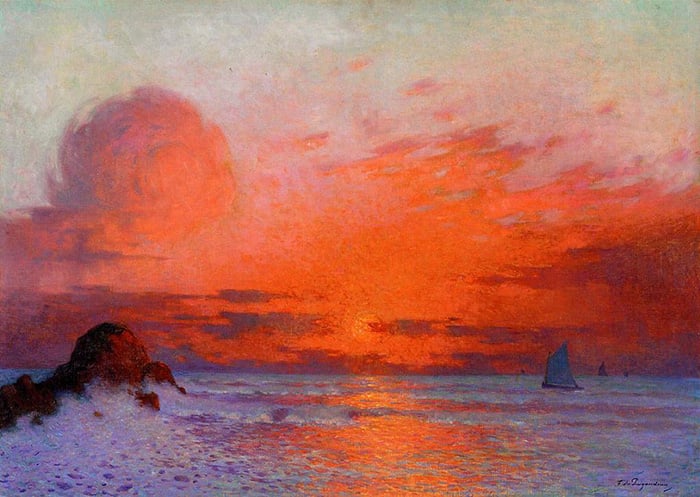
Shape and Form
The sky is transient and fleeting by nature, but that doesn’t mean you should depart from all ideas of structure, shape, and form when painting it. If anything, these concepts are even more essential as they allow you to make sense of the sky and its complex detail.
Let’s break the sky down into its most common parts: clouds and ambient space.
Clouds are tricky in that they come in an ever-changing array of shape, form, color, and detail. Thinking about them in terms of shape and form gives you a simple and consistent way to approach them.
The following are some questions that will help you see the clouds in terms of their structure. I’ll use my reference photo below to demonstrate the ideas.

- What do the clouds look like in terms of simple shapes? Make sure you don’t get caught up in the tiny details. This is not about perfect drawing; think big and simple. This is particularly important at the start of the painting when you are sketching and exploring the composition.
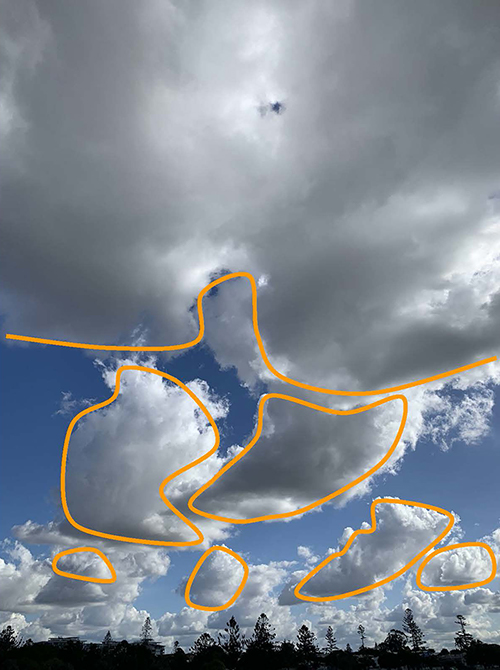
- Where does the light turn to shadow? This is the terminator line. This is important for conveying form and making sure your lights and darks are distinct. Keep in mind, the terminator line will vary in terms of clarity based on the form and light.
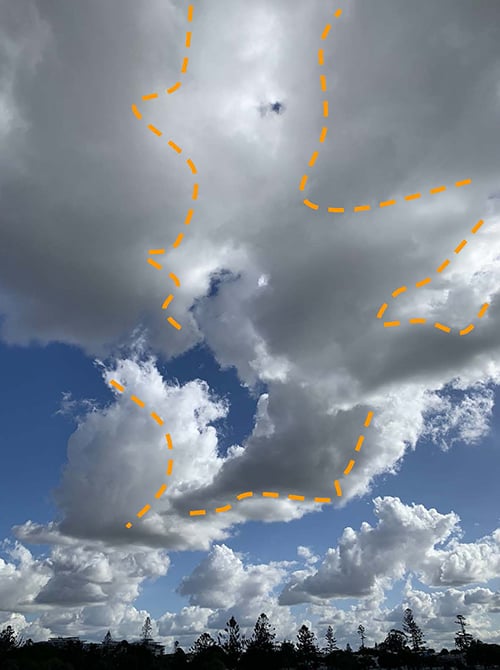
- What is the hardest edge? It will probably be around the highlights or areas of sharp contrast. Hard edges convey clarity and draw attention, so it’s important to get them right.
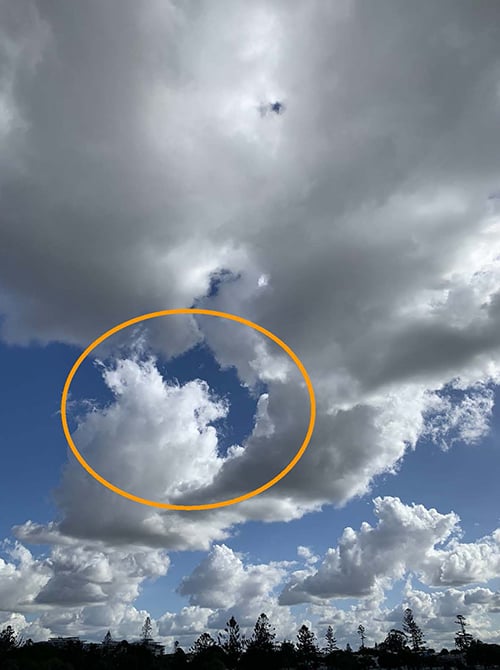
- What are the major contours? Think about how the form is positioned in space. Use your brush to follow the form up, over, and around. Look for areas where the form is pinching or stretching. If you need help with this, watch any drawing videos by Glenn Vilppu or Steve Huston. They are masters of exploring and communicating structure and form.
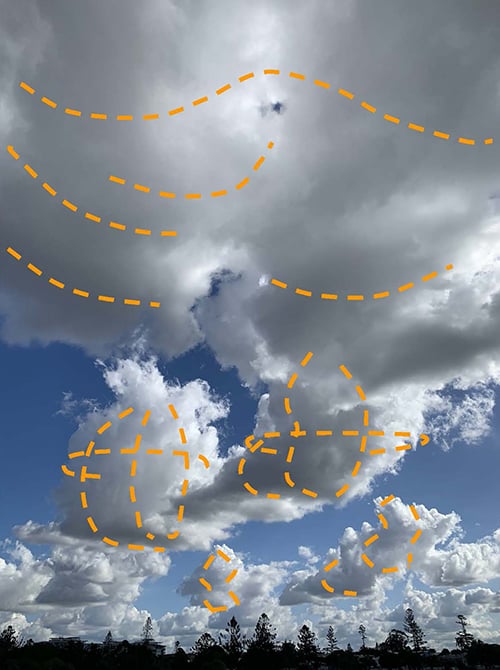
The rest of the sky will be made up of ambient space. These areas lack any sense of form by nature, so it’s best to think about them as flat shapes. Think about them and the clouds as puzzle pieces that slot together.

At the start, it will be difficult and uncomfortable to see the clouds in terms of their structure. But once you get the hang of it, it will make the sky much easier to understand and paint. You’ll see the sky as a set of building blocks rather than an incomprehensible array of “noise”. Doing this will also reveal weaknesses or opportunities in composition. For example, too many clouds on one side of the painting may be causing an imbalance. Or perhaps there’s too much ambient space. Or perhaps there’s an opportunity to arrange the clouds in a way that leads the viewer through the rest of the painting.
Color and Light
Color is perhaps the most important and challenging aspect of painting the sky. Get the colors right, and the sky will glow and shine like light itself. Get them wrong, and there’s no saving the painting.
The nature of the light is the primary factor in determining the sky’s colors. Nature being the light’s strength, temperature, and concentration.
Let’s run through some of the different light scenarios you’ll face.
Under the warm, midday sun, the light is strong and direct. This means sharp contrast, bright highlights, and deep shadows. The lights will be warm relative to the shadows. You’ll also be dealing with two primary light sources: direct sunlight and ambient light from the blue sky. I find this exaggerates the warm light, cool shadow relationships.

On a cloudy, overcast day, the light is indirect and diffused. This means soft contrast and weak color saturation.

At sunrise or sunset, the light is strong, low-set, and warm. That means warm and brilliant lights against dark and relatively cool shadows.
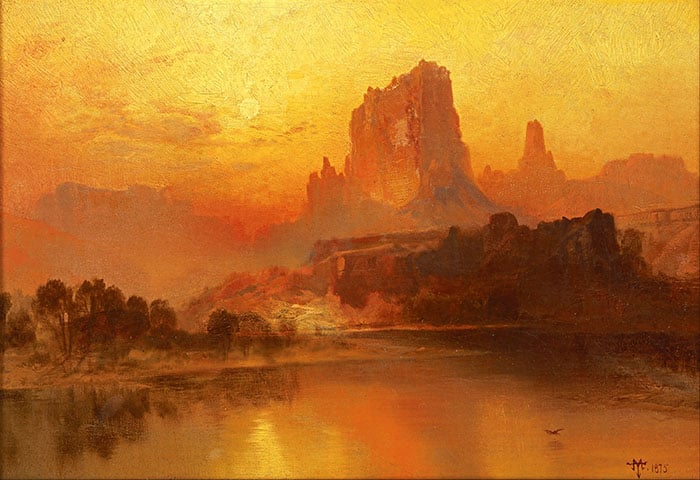
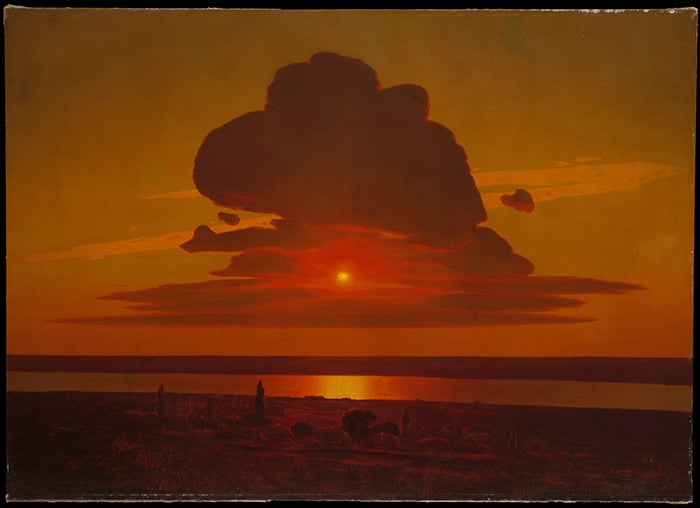
At twilight or blue hour, the light is soft and cool. This is when all those wonderful pastel colors come out to play.


If your colors look off, it’s likely because they don’t make sense in the context of the light. For example, saturated blue would look out of place under a warm light. In fact, the color blue cannot exist under yellow light. You can test it for yourself. Place a blue object under yellow light and it will appear black. That’s why color theory is so important. It helps you avoid using colors that simply would not make sense in your painting.
Within the bounds of your colors making sense, you’re free to exaggerate or restrain certain colors in favor of your ideas. You might choose to push the color saturation, as John Grimshaw did with the brilliant yellows in Autumn Morning.
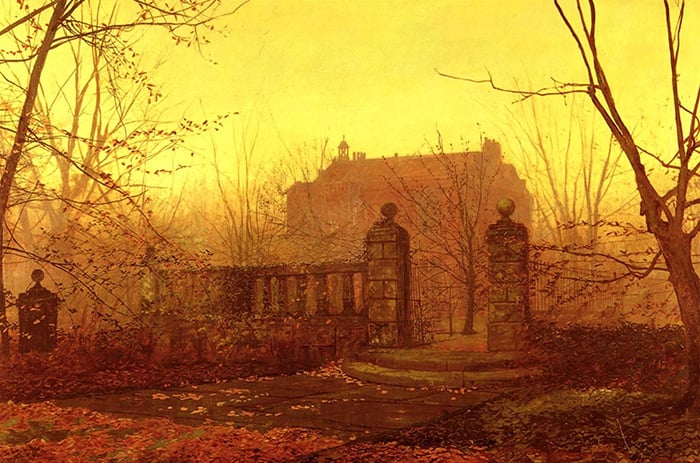
Or you might push the drama by making the lights brighter and the darks deeper and blacker. See Night on the Black Sea by Ivan Aivazovsky or any of the work by Thomas Cole or Albert Bierstadt.

Or you might paint the sky in a high key, making all the colors lighter. Joseph Turner did this with many of his vast landscapes, particularly his watercolors. Keep in mind, you must always pay attention to the relationships between the colors and parts of your painting. If you make the sky lighter, you should consider making the other areas lighter as well to retain the relationships.
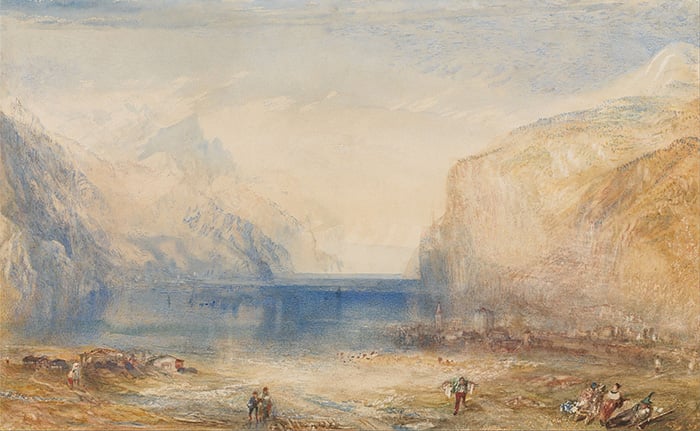
Movement
One of the key challenges of painting is conveying movement on a flat, still surface. Of course, we cannot make our paint physically move on the canvas, but we can create a fairly convincing illusion of movement through the clever use of brushwork and color.
Vincent van Gogh painted some of the best and most recognized examples of capturing a sky’s movement. Below is The Starry Night. Look how his strokes twist and swirl and take you on a visual journey around the painting.

Here’s another example of capturing dramatic movement in the sky: Marine View With Storm Clouds by John Constable. Notice the long, sweeping strokes to suggest rain, wind, and light and how this contrasts against the relatively still and calm areas.

You should be thinking about movement even when the weather is still and calm. The sky is always moving and you should paint it as such. In Café Terrace at Night, van Gogh used a tiling technique to convey the still night sky. It’s less active than but still full of life.
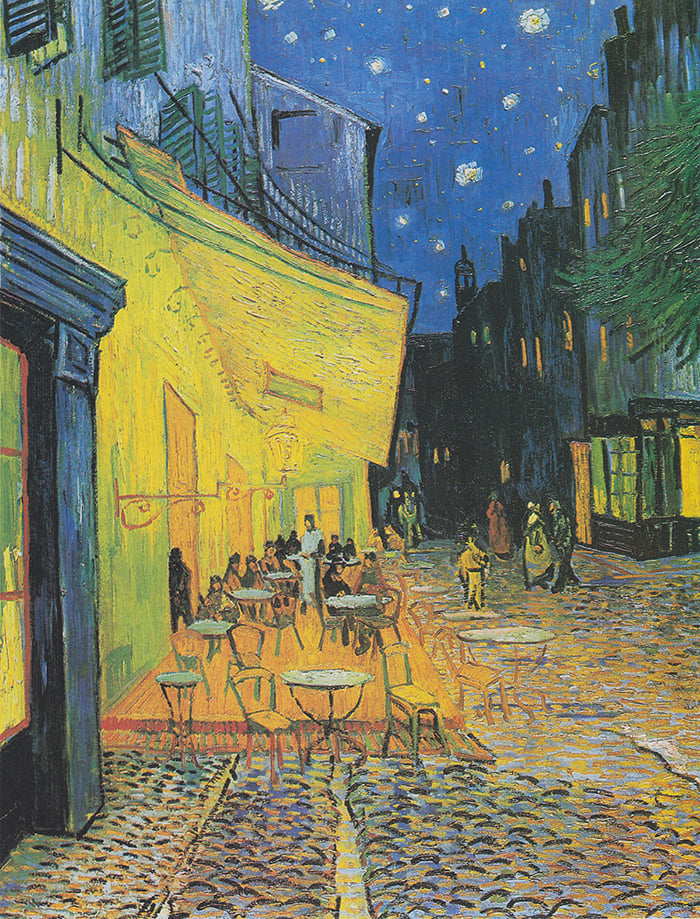
Below are some specific techniques you can use to convey movement:
- Use directional brushwork to convey broad movements and to lead the viewer through the sky and the rest of the painting. Pay attention to where the focal point and other key areas are in your painting so you can direct the viewer there.
- Broken color is particularly effective for adding interest to calm and still skies. See Lilla Cabot Perry’s View of Mount Fuji.

- Can you arrange the clouds in a way that they lead the viewer through your painting?
- Vary your techniques for complex and dramatic skies. Turner’s work is a great example. In a single painting, he would use scumbling, thin color washes, energetic strokes, thick dabs, and intricate detailing. The end result is a sky that’s full of life and movement.
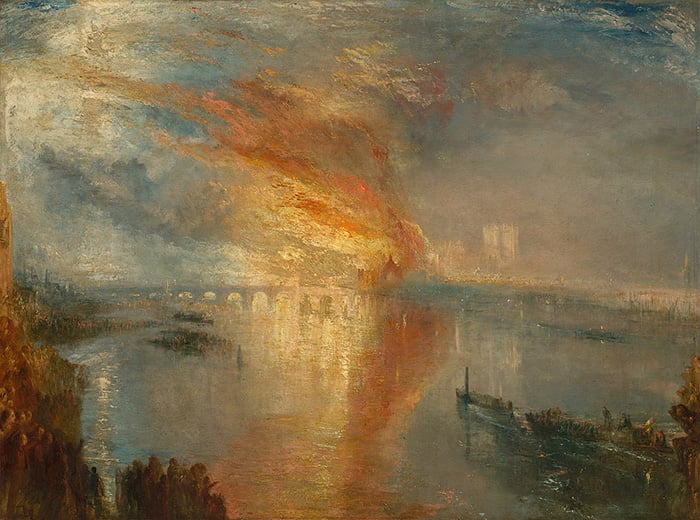
Role of the Sky
The sky should not be considered in isolation, but rather in relation to its role in the painting. Is the sky part of the background or is it the focal point? This will influence how you go about painting it.
A feature sky will command attention. You might use sharp edges and clarity, brighter colors, and striking contrast. You might use thicker paint to reiterate the lights and energetic brushwork to convey life and movement.

A background sky will play more of a complementary role. Its job is to make the rest of the painting sing. That means you might restrain the colors, use softer edges, and push the ambience.
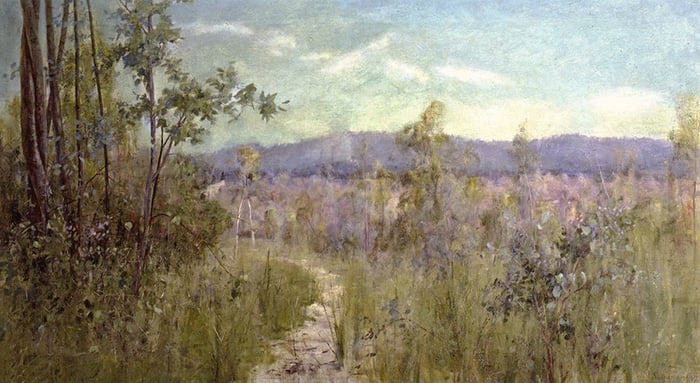
Sometimes, the sky will play a seemingly minor but essential role. In Isaac Levitan’s Landscape With Ferns, the sky represents only a tiny portion of the painting. Yet, it’s essential for breaking up the dense trees, adding depth, providing context, and acting as a point of contrast for the surrounding dark colors.

Brushwork and Technique
I cannot provide you with specific guidance on what brushwork and techniques to use as it varies based on the nature of the sky and its role in your painting. But I can give you some general pointers:
- Consider using thick paint for the lights and thin paint for the shadows.
- Use your brush to follow the broad movements of the sky and the forms of any clouds.
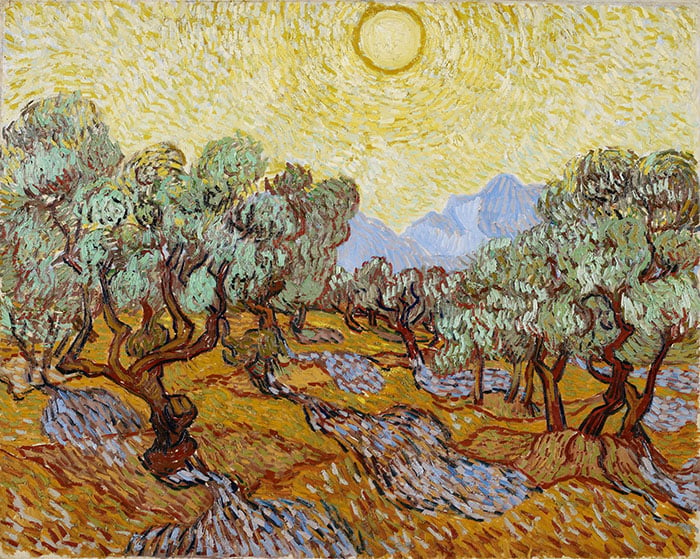
- If you find yourself getting caught up in the tiny details, use larger brushes. This will force you to be more economical with your strokes.
- Use high-quality brushes and paints. It makes a difference.
- If working in acrylics or oils, save your brightest highlights until last. If working in watercolors, you will typically start with your highlights (the blank paper) and end with your darks.
- Filbert brushes are effective for capturing the softness of the sky. Flat brushes allow you to paint with more rigidity and structure. Round brushes are versatile but particularly effective for linework and detailing.
- Consider using a palette knife to create clean, flat strokes. This can be particularly effective for painting a clear blue sky.
High-quality palette knives crafted with stainless blades and ergonomically designed handles.
Different Mediums
Your chosen medium will influence the way you paint and set the limitations of your work. It’s important that you understand these limitations. There’s no point in painting in watercolors if you want to use thick, impasto strokes and luscious colors.
Oils are thick, textured, and versatile. They are my preferred medium.
Strengths for painting the sky: Vast range of techniques to capture the sky’s complexity; thick strokes for highlights; thin washes for ambient spaces.
Weaknesses for painting the sky: Can be challenging to work wet on wet, with the colors mixing on the canvas.

Acrylics are beginner-friendly. I started with them as a child before moving over to oils. They are similar to oils but less versatile in that you cannot easily work wet on wet or build up layers of translucent color. The fast drying time can also be frustrating to deal with.
Strengths for painting the sky: Can work with thick paint or thin washes; the fast drying time means you can quickly build up layer upon layer of scumbled color.
Weaknesses for painting the sky: Limited range of techniques.
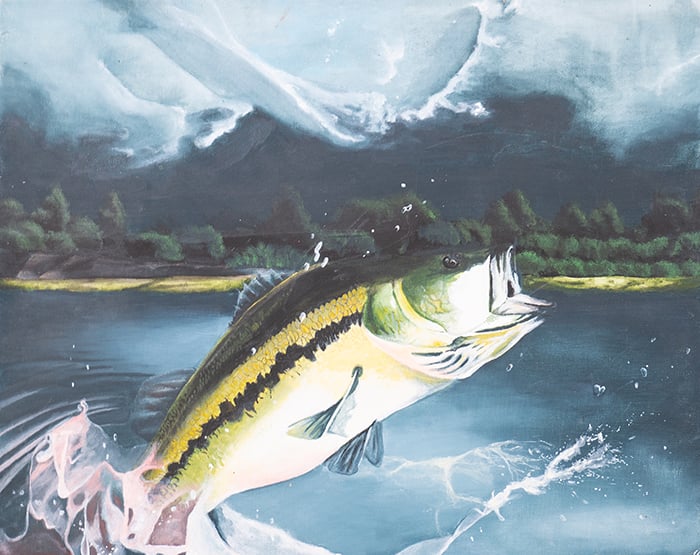
Watercolors are delicate and versatile. They are simple to pick up but incredibly difficult to master.
Strengths for painting the sky: Vast range of techniques to capture the sky’s complexity; thin washes for ambient spaces and still skies; intricate detailing.
Weaknesses for painting the sky: Weak colors compared to oils; prone to unrecoverable mistakes; difficult to master.

Those are the main mediums, but you could also use gouache, which is similar to watercolors, or water-mixable oils, which are easier on the senses compared to traditional oils.

Key Takeaways
- Seeing the sky in terms of structure, shape, and form allows you to make sense of all the detail and “noise”. It gives you a simple and consistent way to approach a dynamic and ever-changing subject.
- Get the colors right, and the sky will glow and shine like light itself. Get them wrong, and there’s no saving the painting.
- Most of your color questions can be answered by understanding the light. What is the temperature of the light? How strong and concentrated is it? Where is it coming from? Are there any indirect light sources?
- Within the bounds of your colors making sense, you’re free to exaggerate or restrain certain colors in favor of your ideas.
- You can create a fairly convincing illusion of movement through the clever use of brushwork and color.
- The sky should not be considered in isolation, but rather in relation to its role in the painting. Is the sky part of the background or is it the focal point? What is its purpose?
- Your chosen medium will set the limitations within which you must work. Make sure you understand these limitations.

Want to Learn More?
You might be interested in my Painting Academy course. I’ll walk you through the time-tested fundamentals of painting. It’s perfect for absolute beginner to intermediate painters.
Thanks for Reading!
I appreciate you taking the time to read this post and I hope you found it helpful. Feel free to share it with friends.
Happy painting!
Dan Scott

Draw Paint Academy


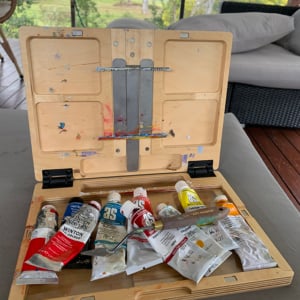
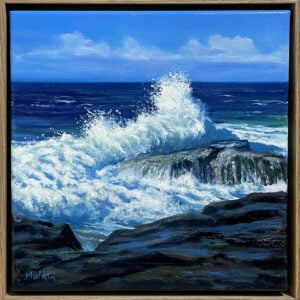
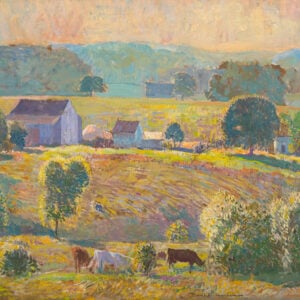


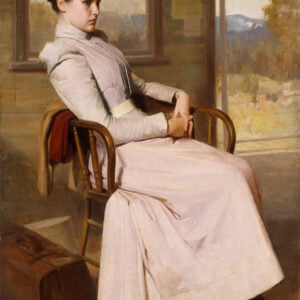
Fabulous, thanks.
Thanks Dan !
Terrific art lecture !!
Fantastic illustrations from your selection of artists .
Thank you Dan. Great lecture with superb illustrations.
Thank s Dan. Great reading. Great tips. Sandra.
Thanks again for your wonderful painting advice! I’m going to implement it today and am very excited to see how it all comes together. Have a great 4th of July.
This information is extraordinarily helpful. I am so grateful because it inspires me to paint and try new things! Thank you!!!
Wonderful. Thank you.
Very helpful!
Thank you for a wonderful wealth of information! It was broken down in such a way that was extremely helpful! I am starting a new piece today and will use my notes about light and apply the tips on thicker paints for brights and thinner for shadows!
Thank you Dan, good information, great childhood painting.
Good stuff…thought provoking and educational, loved your blue is black in yellow light – gave me an aha moment…thank you
Woooooow !!!!!
Excellent exercise and knowledge
Really enjoy your information. You are very generous and I appreciate all you share.
This was so helpful. Thank you.
Dan,
Wonderful “Dan Scott Perspectives” on the the art of art. Your explanations, diagrams and utilization of Work of selected Masters opens vistas to style techniques. Thank you!
Cheers!
You have opened my eyes. Thank you so much. Such diversity between the various artists.
Wow Dan that was great , informative with wonderful examples
So comprehensive and beautifully illustrated. Thank you.
Not a duplicate. There is another Helena
What an amazing diversity of skies! They have always held fascination and , of course challenges, ever-changing and often frustration. Your selection and know-how are really valuable to people like me who struggle to get it ‘just right’. Thank you so much Dan.
Your words sing throughout this article! I especially like the illustrations perfectly interspersed throughout, making very interesting and understandable content. Thank you Dan for your inspiration!
Thank you for your inspiring messages on painting clouds. They have made me look at them in a new light.
Very helpful and interesting choice of examples as always, thank you
Dry helpful, thank you. I especially appreciate the notion of defining the contours.
Love your chosen expanses too. Thanks!
Meant Very, not Dry😏
Thank you for taking the time to put together such an interesting and informative article!
Love these skies!
Wonderful post! I have always had trouble with painting the sky. Tried different techniques from different artists and different media, but I was never satisfied with the end product. This is the first time anyone had talked about using the different elements. Makes sense! Thanks!
Excellent so helpful
Many thanks, I will reread again and again.
Can never learn too much about cloud-making. Most appreciated.
How about pastels? I have seen lovely sky’s completed with pastels.
The other info is great.
Thank you for the great information. Your thoughts are helpful and makes artistic sense. Your examples are clear and well illustrate your thoughts. A wonderful addition to my “lesson” file. Thank you.
Thanks Dan,
Very Informative, appreciate you sharing your wisdom with us.
Excellent!
Thanks and I repeat what I read: Woooooow !!!!!
Thank you Dan, this is so helpful.
Thanks Dan,
Love and appreciate this lesson. Only had time to read the form and shape before I got pulled away. Later I was on Facebook, started analyzing a photo of clouds, immediately went back to your article to finish it. Such great information on painting skies. Anne
Thanks. Valuable lessons!
Thanks. It’s always good to learn more about skies
Thank you for yet another invaluable Guide to Painting!
Always on point and most appreciated!
Thank you Dan! Very useful advises, helpful thoughts, informative talking – it’s all you. I will read it over again and again when ready to paint.
Thank you. Helpful
Thank you Dan, this is generous, inspiring and extremely useful. I will be referring to it many times!
Thank You Dan!…
Thanks Dan truly inspiring and such wonderful content.
impressive research .
impressive research . I appreciate it much
I always enjoy reading your posts! Thank you
Thank you immensely! The sky is always so intriguing and you have made wonderful techniques sound doable!
Your email about painting skies was very timely as I’ve just started to block out a picture of a water mill with loads of sky and reflections in the millpond. Getting the light right is going to be a big challenge for me.
I am surprised, and disappointed, that the Group of Seven artists and Tom Thomson is never referenced for their technique and skill considering how similar your work is to Thomson, in particular. This link may interest you re clouds.
Thank you for all your wonderful articles. They are very helpful
https://www.aci-iac.ca/art-books/tom-thomson/key-works/
Thank you Dan, fantastic information and so brilliantly conveyed. You are an artist and a teacher!
Mi gratitud por los útiles, interesantes y hermosos contenidos que nos proporciona usted en cada ocasión.
Que esté usted siempre bien, feliz y en paz.
Thank you Dan! Your comments are so helpful and insightful. Now… if I could just remember them while I’m out painting!
Very thorough lesson, Dan. As a beginner, I am grateful to learn how to respect the complexity, diversity and beauty of the sky and see how they apply to art. Wonderful descriptions, cautions and examples.
The lesson has a lot of information and very thoughtful. You make it look so easy. I truly enjoy reading your post’s.
Hello Dan,
This particular lesson is quite excellent. I so appreciate you taking the time to select these wonderful reference images and write an excellent piece. I take with me a ton of knowledge from this and I owe you a ton of thanks.
Cheers!
Gina in NC
Thank you for taking the time to post all this wonderful information. Loved the childhood painting!
Thank you so much for this very detailed information. There is enough here to keep me busy for a very long time! I am going to keep this nearby and refer to it often! I really appreciate how clearly you explain everything and break down the information into categories- making it easier for us to learn! I really enjoy Learning from you and appreciate the effort that you put into everything you do!!
Thank you! I especially love studying the masters. You really helped break it down for me.
Carolyn
Thank you Dan for your great lesson on painting clouds and colours.
And excellent childhood painting.
Thank you for such a great explanation and instructions on why’s and how’s of painting the sky. My favorite medium is watercolors. But much of your advice can be applied to most any medium.
I especially thought the “What are the major contours?” I had never thought of clouds in that way.
Also, I love it when a well-known artist like yourself tells you that it’s okay to exaggerate or restrain certain colors in favor of your own ideas. And your selected examples are perfect. In your recent email, you said to “follow your own vision and ability to bring an art piece to life. Have the resilience to stay on your own path, rather than being swayed by other people.” I printed a copy of that for my granddaughter. She will labor over a painting for months, worrying about what everyone else will think of it. (I labor over getting started!) And she is a very good artist. But I think she is missing some of the joy of painting.
Thank you for sharing your talent with so many people.
Thank s Dan. Great reading. Great tips. Sandra.
I was blown away by your selection of artwork to illustrate your lessons. Thank you sooooo much…I am enjoying your lessons and illustrations tremendously. I love your artwork immensely!
Fantastic gallery! Really inspiring. Thank you so much!
A very insightful read; all about what’s above us and with some practice, inspirational examples, your encouraging words are thought out with your knowledge. Now, if I can remember at least some of your pointers and examples; very well thought out Dan, and always welcome to our efforts.
John, Calgary AB Canada